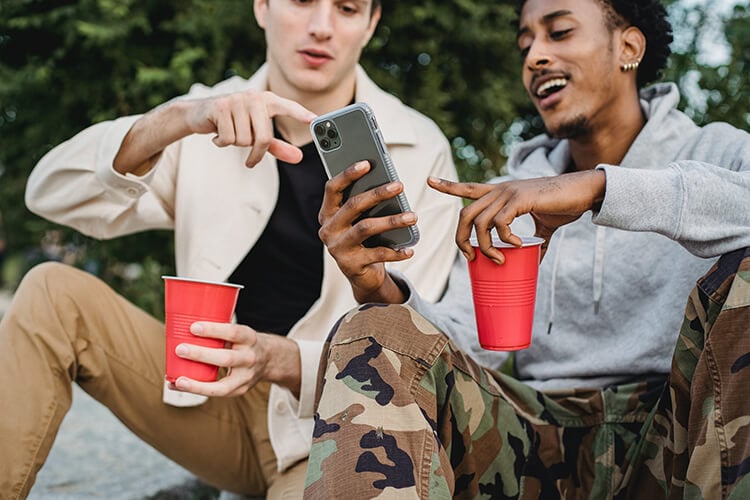Price Sensitivity - 9 key factors for your pricing strategy!
In today's economy, a pricing strategy is not just a way to make revenue. It can, and most likely will be, a deciding factor in whether your product or service experiences success in a customer's mind or not.
Thus, pricing is a key element that should not be taken lightly. And we know, that special circumstances force many in the leisure industry to rethink pricing strategies these days.
With the continuous overflow of information telling you to keep a billion things in mind, pricing might appear like rocket science at first; but don't you worry, we will be able to help with that!
We recently had a webinar on how your pricing strategy can help you save your season, so if you're more of a watcher than a reader, you should definitely check it out!
However, with this read on your side, you will understand the factors of price sensitivity and how you can work with this knowledge to deliver the best price for you AND your customer.
The "9 factors affecting a consumers' price sensitivity."
With busy everyday operations, we are aware that what you need are actionable and impactful insights on the spot. Congratulations! You've come to the right place.
After compiling inside knowledge with insights delivered by great researchers like Thomas T. Nagle and Reed K. Holden, in this read we will provide you with "9 factors affecting consumers' price sensitivity", along with a few examples on how to use them when mapping out your ticket pricing strategy.
You will be surprised how many of these are simple, logical, and easy-to-use.
If you want to dive deeper into this, let us introduce you to the holy grail of pricing: The strategy and tactics of pricing: a guide to profitable decision making by the aforementioned Nagle and Holden. Although this priceless masterpiece was written back in 1951, it includes a wide range of timeless, well-acknowledged insights and practical guidance into strategic pricing.

1.Price-Quality Effect:
Customers appear to care less and less about the price of a product or service if they get the perception; it also delivers higher quality in return. This does not necessarily mean you need to have the best product in the world since this is also very subjective and varies from customer to customer; it means that you might have to establish a sense of exclusivity or rareness. You need to stand out.
And how to do this best as a venue? By using your experiences! A customer will most likely not pay more to go to venue A instead of venue B because their attractions are "technically better", but because of the experience involved in it. So use your customers' connection to experiences in creating this exclusivity.
In a more administrative sense, for your business, this could also mean offering a certain amount of ticket packages in a limited amount or with a special add-on to it.
Increasing quality perception can also be achieved by word-of-mouth, online or offline, meaning you could try to encourage your customers to review you by offering exclusive incentives in return.
2. Expenditure Effect
Think of your visitor or customer - they probably have a limited budget for leisure time activities. They will most likely think about how to split this budget. Therefore, you need to consider this and create a price that is reasonable and proportional to fit into it.
Of course, you can not know the exact budget of your visitors. Still, you should start gathering insights or use already collected information and historical data to have a broad idea of which income class is of the highest importance to you. In Inbound Marketing, we call this creating your "Buyer's Persona."
3. End-Benefit Effect
As the name puts it: this effect is related to the end benefit of the purchase. Everyone has an end-benefit in mind when purchasing tickets, products, or services of any kind, and there is a threshold to how much we are willing to pay to reach the end-benefit.
Take Luisa for example:
She purchases two tickets for a wellness weekend at the beach. Most likely, one of her goals is having a relaxed day at the spa; but what if that is not the only driver of her choice?
He might have bought those tickets for him and his girlfriend because he really wished for a day away and she loves the beach.
This narrows down Luisa's choice and gives it a different level of sentiment - she wants to make his girlfriend happy! His motivation will cause him to be less price-sensitive and more focused on specific places as compared to when his only goal was a simple 'day at the spa.'
What we learn from Luisa is that before the purchase, a customer will probably first decide how sensitive he is to the benefit, and then considers how much your service contributes to achieving this. The more you provide, the less sensitive they tend to get. Although this might be a process that happens unconsciously in a customer's mind, it is surely a point venue should be consciously aware of.
A piece of good advice: Offer 'All in one - package deals' or offer possible roadmaps for visitors, which shows them how to have 'the perfect day' to get all out of your venue.
Nurture and take care of their whole experience from A to Z.

4. Shared-cost Effect
This one is simple, the smaller the portion an individual has to pay for a purchase acquired, the less price-sensitive they usually are. Thus, the bigger the bundle, for example, group or family tickets, the smaller appears the portion of what each person has to pay for themselves.
5. The Framing Effect
Partly connected to the shared cost effect, customers tend to react positively if prices are bundled and not to be paid separately. Added to that, logically, they respond better to purchases that clearly communicate their gains rather than their potential losses.
For you, that means portraying even the simplest of your tickets or packages as a good deal based on the advantages they do have from it. We understand you want to upsell and get them to buy more advanced packages, but instead of telling them how to package A is less than package B, instead, tell them A is great, but B is even greater.
6. Fairness Effect
Context is key! Anyone who purchases anything is always doing it in a certain context. This context determines whether a price is considered fair or not. Thus, you need to consider in which context your customers purchase your offers. You can also take a proactive approach and create a context by communicating specific circumstances.
Is it high-season? Holiday season? Low-season? Are there any special events happening? - what advantages does this come with? This is where dynamic pricing models might come in handy to take these ever-changing effects into consideration and adjust prices accordingly on the fly.
Related read: Dynamic Pricing Vs. Real Time Pricing
7. Reference Price Effect
This effect is simply defined by the comparison to alternatives. Buyers tend to be more price-sensitive for an offer if it is much higher, relative to its alternatives. If a buyer can directly and easily compare you with your competitor's pricing, price-sensitivity rises.
Make sure you are aware of what your competitors offer at which price and consider this in your pricing approach. But be careful! Competitive pricing is an important point but should not be the entire base of your pricing model.
We are sure your offer is very different from what alternatives offer - communicate that and make the direct comparison more difficult because you offer a differentiated experience!
8. Difficult Comparison Effect
This effect is closely connected to the advice we gave you beforehand: if a potential customer has more difficulties comparing prices, they tend to be less price-sensitive.
This does not mean you have to make it difficult for your customers to find information; transparency is still important! Just, as mentioned before, make sure you communicate the point of difference that makes you incomparable and unique.
I am sure you know it, but people are more likely to buy familiar products or services, underlining the importance of salience and re-engaging existing customers by continuously nurturing them and offering good deals.
.jpg?width=672&height=448&name=Browsing%20on%20internet%20(1).jpg)
9. Switching Costs Effect
This one is more applicable to subscription-based services or products, and therefore, if you are a leisure venue, it might refer more to season tickets or memberships.
It refers to the inconvenience an individual has in switching from you to an alternative.
This does not mean to make it administratively impossible to cancel or refund tickets but to provide ongoing fundamental value to these customers that make them less likely to leave.
An idea could be a loyalty program with points they gain every time they use their season card, visit a certain attraction, or add an item such as a meal to their visit. At a certain amount of points, you can offer incentives, and maybe your customers will think twice of losing those free upcoming benefits.
The bottom-line
Here you have them! 9 laws that, whether you like it or not, have a direct influence on your consumers' price sensitivity. Use them wisely (and creatively!).
It's up to you to leverage them in your pricing strategy, but include them or not; we hope that you now have a better understanding of the psychological factors that contribute to the sense of price sensitivity.
In the end, besides the competitive environment, it all boils down to knowing your customers, your venue and the relationship between the two.
Do you have any questions regarding the topic, or would like to get help find the right pricing strategy for your venue? Then don't hesitate to talk to a member of our team, we are here for you!
